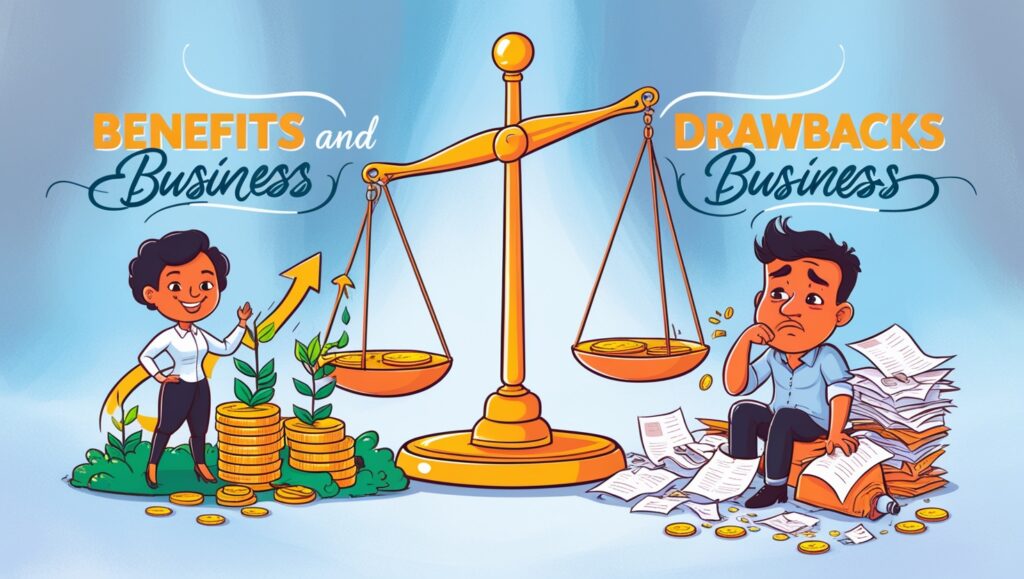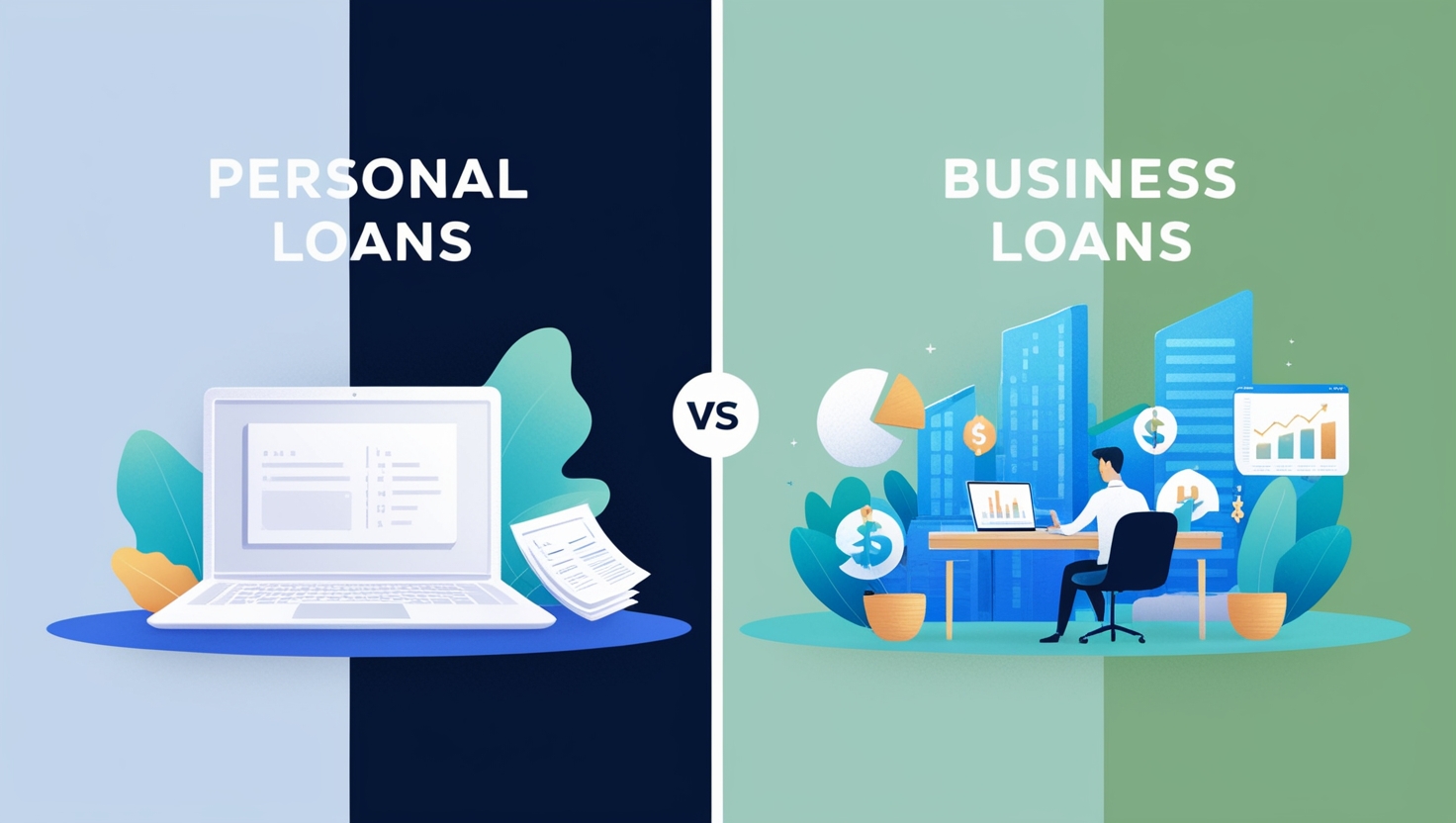Background
Financing today is all about needs in a changing economic environment. Borrowing can take many forms, depending on either personal or business motives. There are personal loans and business loans, and these essentially cater to different needs. It’s also crucially important to understand the differences between these loan types so that better financial decisions may be achieved, for either personal reasons or company growth.
What Are Personal Loans?
Loans on personal lines are funds provided to a person according to his credit-worthiness, income and history. They can be used to pay for a myriad of expenses, including but not limited to:
- Debt Consolidation: Combine numerous debts into one loan with a lower interest rate.
- Home Improvements: Use funds to renovate or refurbish improving property value.
- Medical Expenses: Payment of unexpected medical costs which are not fully covered.
- Education Expenses: Tuition or other expenses associated with education.


Key Features of Personal Loans
- Unsecured Nature: Most personal loans are unsecured, meaning no pledge is required for collaterals. This is quite helpful to the borrower in case there is nothing to pledge.
- Fixed Interest Rates: Most personal loans carry a fixed interest rate; thus, there will be no risk of change of interest rates, making it easy to have the monthly repayments.
- Shorter Terms: Compared to other loans, personal loans have relatively short repayment terms, mostly between one and five years.
- Loan Amounts: Amounts are varied pretty deeply as low as a few hundred to tens of thousands of dollars depending on the lender and the creditworthiness of the borrower.
Business Loans
Business loans are available to entrepreneurs as well as business people to help finance their operations, growth, and investments. They can be secured or unsecured, and they are designed to meet the needs of a business. Some of the popular uses for business loans include:
- Working Capital: To run day-to-day operations, such as providing payroll and inventory.
- Purchase of Equipment: Funds the acquisition of machinery, technology, etc.
- Expansion: Funding the growth of a business, including opening new locations or launching new products.
- Real Estate: Acquisition of commercial property or real estate investment.
Important Characteristics of Business Loans
- Types of Loans: They can be secured or unsecured, and there are several types, including lines of credit, term loans, and SBA loans.
- Longer Repayment Periods: Most business loans have longer repayment periods; sometimes, it goes up to 10 years or even more, hence attracting a smooth monthly payback.
- Higher Loan Amounts: Contrasted to personal loans, businesses borrow in much higher amounts- from thousands to millions of dollars depending upon the business needs and financial conditions.
- Interest Rates: Interest rates again vary on a huge scale, depending upon the nature of the loan, the lender, and the creditworthiness of the business.


End
The primary difference between personal and business loans is their usage. Personal loans are meant for personal expenses, but business loans are for business-related expenditures.
Collateral Requirements
- Personal Loans : Generally, most personal loans are not secured, so no collateral needs to be provided by the borrowers. This could make them relatively accessible because a borrower would not have an asset to provide as collateral.
- Business Loans: Most business loans are secured in nature. For instance, equipment, real estate, or an inventory can be taken as collateral. This increases the likelihood of getting approval but will elevate the danger to the borrower in case they default.
Application Process
Personal loan and business loan application processes can be wide apart:
- Personal Loan: In general, personal loans involve a simple application process where mainly the credit score, income, and financial history of the borrower is taken into consideration.
Business Loans
Application business loans are a little bit more complex, and, for example, require business plans, financial statements, and tax returns.
Interest Rates and Fees
The interest rates and fees applied to personal and business loans are different:
- Personal Loans: Generally have a fixed interest rate of almost low to high, with reliance on the credit score. Many typical origination fees, and sometimes prepayment penalties apply.
- Business Loans: Fixed or variable; interest rates can be quite above that of a personal loan, especially with unsecured business loans. Fees can include closing costs and service charges as well.
Repayment Terms
The repayment terms may vary with personal and business loans considerably:
- Personal Loans: They typically are for shorter terms, from one to five years; with monthly payments that may include both principal and interest.
Business Loans
Traditional business loans would fall in a range of three to ten years and longer, giving a business time to refund the loan based on cash flow.
Choosing a Personal Loan
Best Situations for a Personal Loan
Consolidate Debts: High-interest debts, such as credit cards, pay off better under a personal loan because it consolidates that single, lower-interest payment.
- Personal Expenses: Personal loans are always perfect to finance all high expending matters such as weddings, holidays, and medical expenses.
- Small Business Needs: If you are an individual entrepreneur or even a freelancer who requires small sums for both personal and business expenses, then you need a personal loan.
- Available cash at a fairly straightforward application process.
- Fixed interest rates ensure predictable, fixed payments.
Cons
- Typically smaller amounts of money than for business loans.
- Poorer credit borrowers have to pay higher interest.
- Long payback periods means smaller monthly payments.
When to Choose a Business Loan
Best Ideal Use Cases for a Business Loan
- Capital Expenditure: Any equipment and technology, which would help in adding to the productive capacity, will ensure growth.
- Expansion Requirements: A business loan can help with much-needed capital in increasing the operations of the business and/or opening new premises.
- Working Capital: In the event of cash flow gaps or unexpected expenses; the bank loan will help to keep the business running by managing such situations at all times.
Benefits and Drawbacks of Business Loans
Benefits:
Higher loan sums are possible, which are appropriate for significant investments.
Longer repayment periods may not be painful to cash flows.
There may be tax benefits depending upon interest pay-outs.


Disadvantages
A much more comprehensive application process involving more cumbersome documentation
The secured loan has the likelihood of making one lose some of his assets.
The unsecured loan offers higher interest rates than the secured loan.
In the long run, the choice between personal loans and business loans thus boils down to a personal decision based on individual circumstances, financial goals, and specific needs. For most personal expenses, one may opt for personal loans, especially if a person has hardly any appreciable assets. Business loans are specifically geared towards entrepreneurs and corporations that aim to make an investment into growth, as well as operational needs.
Knowing the pros and cons of each loan type can equip a borrower with the relevant information to make decisions that are fitting for their financial situation. This may be an individual seeking to consolidate debt, or a business person who wants to expand. Being aware of the right loan can sometimes open doors to more prosperous financial decisions. Be sure to consider all options and speak to a financial advisor if needed to ensure you choose the best path for your financial future.
